Schools face an enduring challenge: how to honor decades of student achievement, athletic excellence, and institutional legacy when physical space remains finite. Traditional plaques and trophy cases served well for generations, but modern institutions accumulate recognition needs faster than display capacity grows. A high school with 40 years of history might need to celebrate hundreds of championship teams, thousands of record holders, and countless distinguished alumni—far more than any reasonable hallway space can accommodate.
The best school hall of fame walls solve this capacity crisis while transforming how institutions recognize achievement. Modern solutions combine unlimited digital capacity, engaging interactive experiences, instant content updates, and comprehensive searchable databases. These systems preserve complete institutional histories, create powerful alumni engagement tools, support recruiting and development efforts, and demonstrate that every achievement matters—not just those fitting limited physical displays.
Why School Hall of Fame Walls Matter
Recognition systems serve critical institutional functions beyond aesthetics. They motivate current students by showcasing excellence pathways, engage alumni by honoring their contributions, build community pride by celebrating collective achievement, and attract prospective students and families by demonstrating program quality. The best hall of fame walls accomplish all these objectives simultaneously while adapting to evolving recognition needs across decades. Solutions like Rocket Alumni Solutions specialize in comprehensive recognition systems specifically designed for educational institutions seeking to honor achievement without space or time limitations.
Understanding School Hall of Fame Walls: Traditional vs. Digital
Hall of fame walls exist along a spectrum from fully traditional physical displays to completely digital interactive systems, with many hybrid approaches combining elements of both.
Traditional Physical Hall of Fame Walls
Traditional recognition systems built on physical plaques, trophies, and static displays offer tangible presence and established familiarity but face significant limitations.
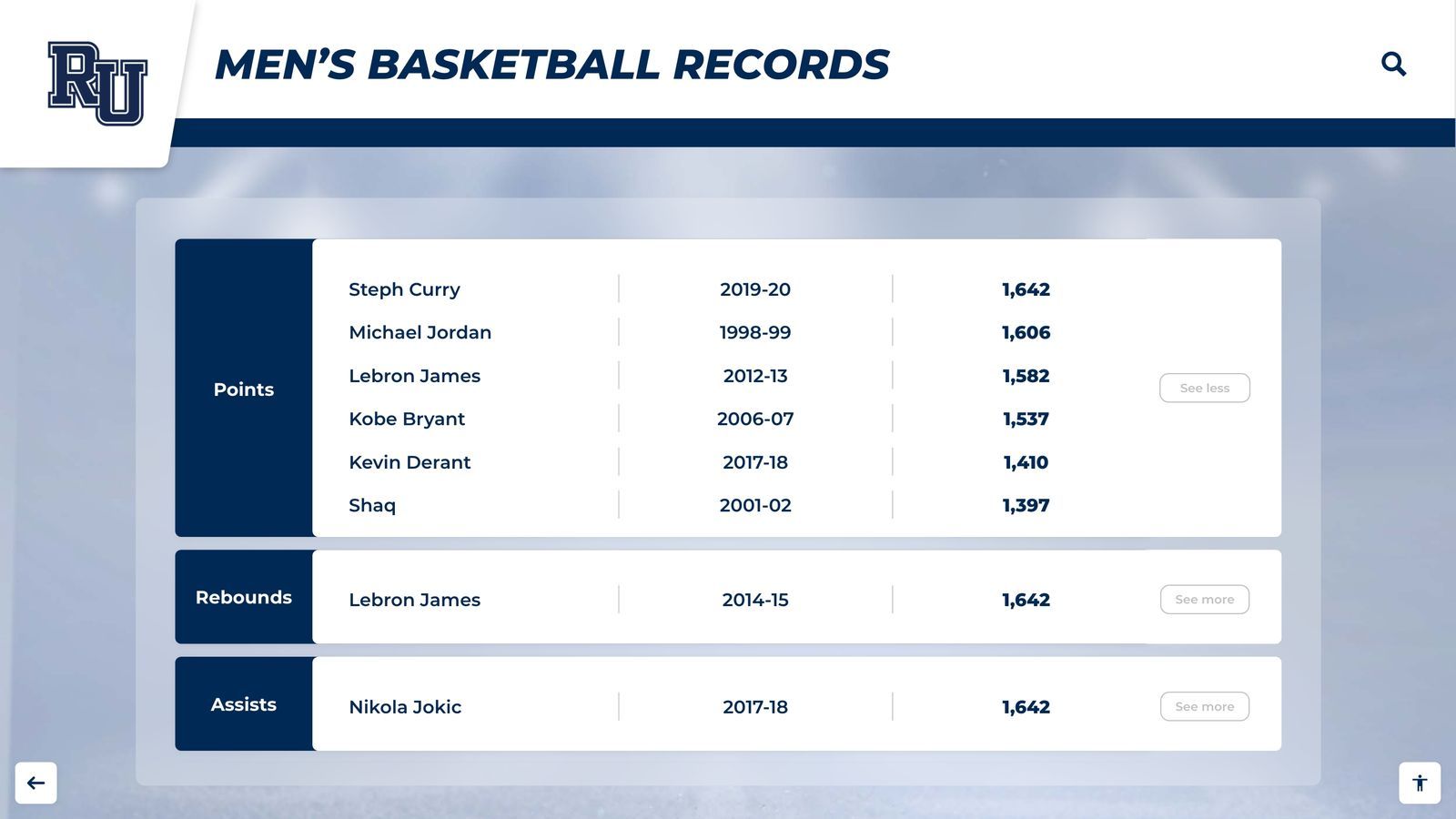
Traditional System Components: Physical installations typically include engraved plaques mounted on walls, trophy cases displaying awards and memorabilia, framed photos of teams and individuals, printed banners celebrating championships, and donor recognition walls acknowledging supporters. These elements create visual impact in high-traffic areas, require no electricity or connectivity, and align with century-old recognition traditions familiar to alumni across generations.
Advantages of Traditional Systems: Physical displays offer immediate visibility requiring no interaction, zero ongoing technology costs or maintenance concerns, familiar aesthetics meeting traditional expectations, no learning curve for viewers, and potential sentimental value from tangible recognition presence. Some stakeholders strongly prefer traditional approaches viewing physical plaques as more “real” or permanent than digital alternatives.
Critical Limitations: Traditional systems face insurmountable capacity constraints. Physical space limits total recognition volume, forcing difficult choices about what deserves display and what relegates to storage. Adding new recognition requires physical installation—engraving plaques, ordering trophies, framing photos—creating delays between achievement and acknowledgment. Updates require physical labor and expense that discourage frequent content refreshment. Most significantly, once physical displays fill available space, institutions must choose between removing old recognition or forgoing new acknowledgment—both unsatisfactory options.
Digital Interactive Hall of Fame Walls
Digital recognition systems use touchscreen displays, cloud-based content management, and interactive interfaces to create unlimited recognition capacity accessible anywhere, anytime.
Digital System Components: Modern installations typically include commercial-grade touchscreen displays mounted in prominent locations, cloud-based content management platforms for easy updates, searchable databases organizing years of achievement, multimedia integration supporting photos and videos, web accessibility extending recognition beyond physical location, and mobile responsiveness ensuring optimal viewing across all devices.
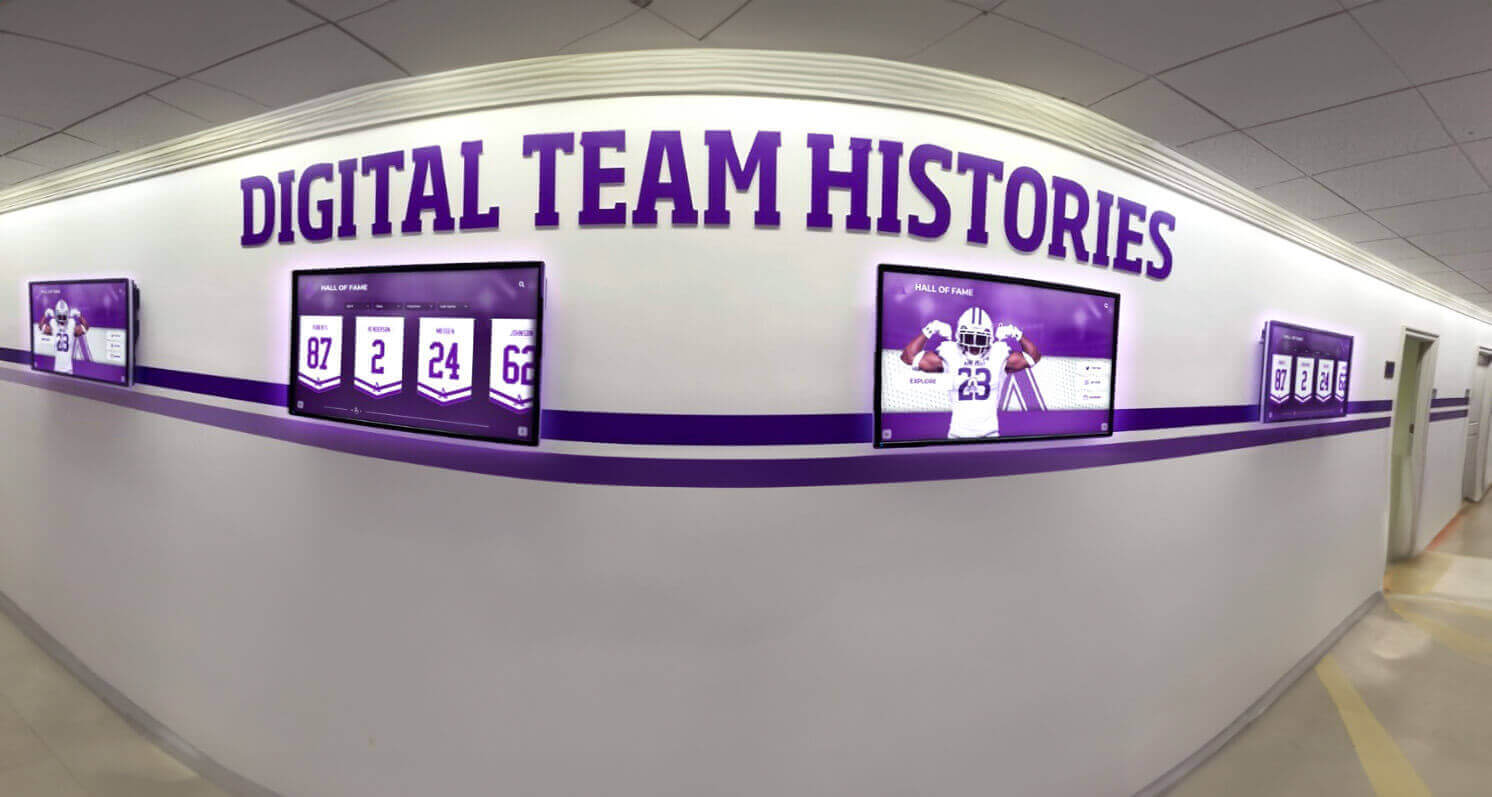
Key Advantages: Digital systems provide effectively unlimited recognition capacity—thousands of achievements fit on single displays through organized navigation. Content updates occur instantly without physical labor or materials cost. Interactive features enable searching by name, sport, year, or achievement type—finding specific recognition in seconds rather than scanning extensive physical displays. Multimedia support adds videos, career statistics, and comprehensive profiles impossible with traditional plaques. Remote accessibility through web interfaces ensures alumni anywhere can explore recognition, strengthening connections regardless of geographic distance.
Potential Concerns: Digital systems require higher initial investment than basic plaques, depend on electricity and occasional technical maintenance, and need content management processes ensuring regular updates. Some traditionalists initially resist departing from familiar physical approaches. However, most institutions discover that digital advantages far outweigh these concerns when properly implemented with appropriate training and support.
Hybrid Approaches: Combining Best of Both Worlds
Many successful recognition programs implement hybrid strategies maintaining selective traditional elements while adding digital capacity for comprehensive achievement documentation.
Hybrid systems might feature signature trophies or historic plaques displayed physically for visual impact and tradition, digital touchscreens providing unlimited additional recognition capacity, QR codes linking physical displays to digital content with expanded information, and web platforms ensuring accessibility beyond those visiting campus. This combined approach honors tradition while solving capacity and accessibility limitations through modern technology.
Essential Features of the Best School Hall of Fame Walls
Exceptional recognition systems share common features ensuring they serve institutional needs effectively across decades.
Unlimited Recognition Capacity
The best hall of fame walls eliminate forced choices about what deserves recognition. Digital systems provide capacity for thousands of athlete profiles, team achievements, coaching milestones, academic honors, and historical documentation. Every championship matters. Every record holder receives acknowledgment. Every distinguished alumnus earns recognition regardless of when they graduated or whether newer achievements have occurred since.
This unlimited capacity transforms recognition strategy from scarcity-driven prioritization to comprehensive celebration. Schools can document complete athletic program histories spanning decades, recognize achievements across all sports equally, honor both team and individual accomplishments, integrate academic alongside athletic recognition, and create thorough alumni databases celebrating diverse contributions.
When space constraints disappear, institutions discover recognition abundance—celebrating excellence comprehensively rather than selectively. Understanding approaches to digital wall of fame benefits illuminates advantages of unlimited recognition capacity.
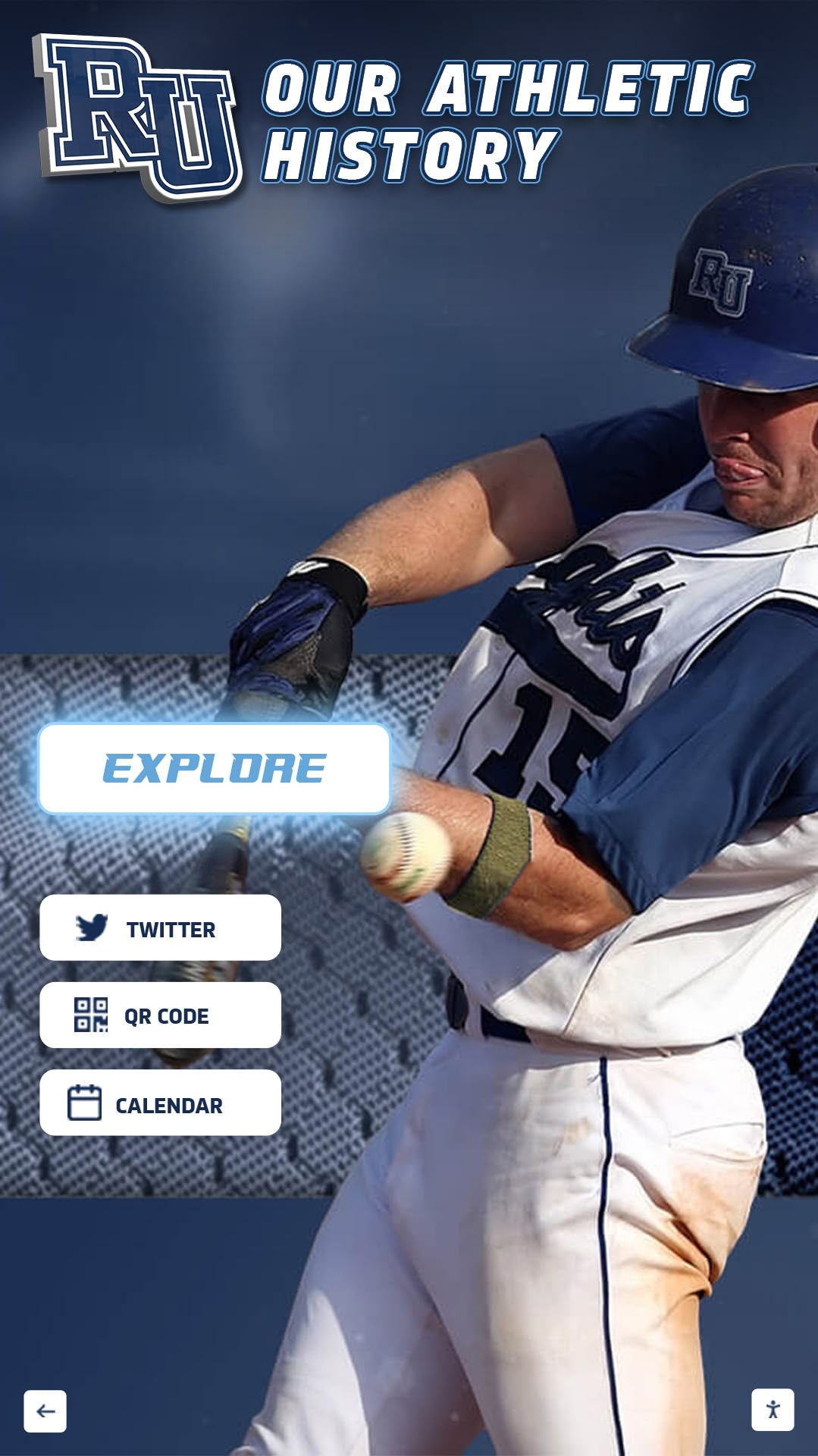
Intuitive Search and Navigation
Recognition value depends on discoverability. The best systems enable finding specific achievements quickly through multiple pathways.
Search Functionality: Robust search allows entering athlete names, team years, sports, achievement types, or coaches to instantly locate relevant recognition. Alumni visiting campus can find themselves in seconds. Parents can discover children’s recognition immediately. Community members can explore specific sports or time periods efficiently.
Filtered Browsing: Organized categories enable intuitive exploration including sport-specific sections showing all football or basketball recognition, year-based organization displaying achievements by decade or graduating class, achievement-type filtering showing championships, records, or individual honors, and coach-specific views celebrating coaching tenures and legacies.
Featured Content Rotation: Home screens can rotate featured recognition ensuring diverse achievements receive prominent visibility. Recent accomplishments appear alongside historic milestones, smaller sports gain equal rotation with high-profile programs, and varied achievement types receive balanced representation preventing any content from dominating indefinitely.
Rich Multimedia Integration
Text and statistics tell partial stories. The best recognition systems integrate comprehensive multimedia bringing achievements to life through photos, videos, and detailed documentation.
Visual Storytelling: High-resolution photos show athletes in action, team celebration moments, championship ceremonies, and personal portraits. Multiple images per athlete or team create richer narratives than single static plaques permit. Historical photos document program evolution across decades—facility changes, uniform progression, equipment development—adding contextual depth to achievement recognition.
Video Integration: Video highlights create emotional connection impossible with static content. Championship game footage, record-breaking performances, athlete interviews and reflections, coach testimonials, and historical documentary content transform recognition from simple data display into engaging storytelling that captivates viewers for extended periods.
Comprehensive Profiles: Best-in-class athlete profiles include complete career statistics and progression, achievement lists with dates and significance, biographical information and post-graduation accomplishments, personal statements or reflections when available, and connections to related achievements or team successes. These thorough profiles celebrate complete individuals rather than reducing excellence to basic statistics.
Resources on creating engaging video content for digital hall of fame provide frameworks for effective multimedia integration.
Real-Time Content Updates
Recognition relevance requires currency. The best systems enable instant updates when new achievements occur, keeping content fresh and demonstrating institutional responsiveness.
Cloud-based content management platforms allow authorized staff to add new recognition from any internet-connected device. When a team wins a championship Friday night, complete recognition with photos and details can appear by Saturday morning. When an athlete breaks a record, updated displays acknowledge the achievement immediately rather than waiting for physical plaque production and installation.

This update capability eliminates frustrating delays between achievement and acknowledgment. Traditional systems requiring physical production mean recognition might lag weeks or months behind accomplishments. Digital systems honor excellence immediately while excitement remains high and community attention focuses on achievement.
Comprehensive Analytics and Insights
Modern recognition systems provide engagement data helping institutions understand recognition program effectiveness and guide continuous improvement.
Analytics typically track total interactions and viewing duration, most-viewed athlete profiles and sports, popular search queries revealing audience interests, peak usage times informing content strategy, and demographic information when available. These insights demonstrate recognition value to stakeholders while informing decisions about content emphasis, feature enhancements, and expansion priorities.
Understanding which recognition generates highest engagement helps schools emphasize similar content. Discovering that certain sports receive limited attention might prompt more comprehensive documentation or improved navigation. Data-informed recognition management ensures continuous program improvement based on actual usage rather than assumptions.
Remote Accessibility and Sharing
The best recognition extends beyond physical displays through web access ensuring alumni anywhere can explore achievements, strengthening connections regardless of geographic distance.
Web-based platforms provide 24/7 access from any device, social sharing features enabling recognition spread, personalized bookmarks for following specific athletes or teams, and permanent URLs for specific profiles facilitating direct sharing. Alumni can share their recognition with family, friends, and professional networks—extending institutional brand visibility while deepening personal pride.
Mobile responsiveness ensures optimal experiences across smartphones, tablets, and computers. Recognition adapts to device capabilities without requiring separate apps or configurations, maximizing accessibility and engagement across diverse audiences.
Comparing Top School Hall of Fame Wall Solutions
Multiple vendors offer recognition systems, each with distinct approaches, capabilities, and ideal applications.
Cloud-Based Touchscreen Display Systems
Purpose-built solutions designed specifically for institutional recognition combine physical touchscreen displays with cloud-based content management, offering comprehensive capabilities in integrated platforms.
Ideal for: Schools seeking complete turnkey solutions with hardware, software, and implementation support bundled together. These systems work well for institutions prioritizing ease of use, visual impact, and minimal technical complexity. Digital recognition displays like those from Rocket Alumni Solutions exemplify this category.
Typical Features: Commercial-grade touchscreen displays, intuitive content management requiring no technical expertise, templates for consistent professional presentation, cloud-based operation enabling remote updates, comprehensive multimedia support, built-in search and navigation, analytics tracking engagement, and professional installation with training.
Investment Range: Complete systems typically range from $10,000-$30,000 for single-display installations including hardware, software licensing, installation, and initial training. Additional displays connect to the same content platform at lower per-unit costs. Annual software licensing and support typically costs $2,000-$5,000 depending on scale.
Advantages: Integrated solutions eliminate compatibility concerns, reduce implementation complexity, provide single-vendor accountability for support, and deliver professional-quality results with minimal institutional technical burden. Purpose-built platforms anticipate educational recognition needs with relevant features and workflows.
Considerations: Higher initial investment compared to basic alternatives, ongoing software licensing costs, and single-vendor dependency for hardware and software together. Schools should evaluate long-term vendor viability and commitment to platform evolution.
Web-Based Recognition Platforms
Online platforms focusing on web accessibility rather than physical displays offer lower initial costs and maximum accessibility but sacrifice prominent physical presence.
Ideal for: Institutions prioritizing broad accessibility and lower costs over physical display impact. These solutions work well for alumni engagement, recruiting support, and documentation purposes when physical recognition already exists or budget constraints limit hardware investment.
Typical Features: Web-based searchable databases, mobile-responsive design, content management systems, social sharing features, basic multimedia support, and integration with existing school websites.
Investment Range: Web-only platforms typically cost $3,000-$10,000 for initial development and setup, with annual hosting and support fees of $500-$2,000. Significantly lower costs than physical touchscreen installations but without prominent physical presence driving daily engagement.
Advantages: Lower cost of entry, accessibility anywhere without physical campus visits, easier content management without hardware considerations, and broader reach through social media and web sharing.
Considerations: Lack of physical presence means current students and campus visitors might not discover recognition organically. Lower visibility can reduce recognition impact for current students compared to prominent physical displays. Web-only approaches work best as supplements to rather than replacements for physical recognition.
Custom Development Solutions
Some institutions with substantial technical resources opt for custom-developed recognition systems built specifically for their unique requirements and integrated with existing technology infrastructure.

Ideal for: Large institutions with dedicated IT departments, unique integration requirements, or specific functionality needs not met by commercial platforms. Custom development provides maximum flexibility but requires significant technical capability and ongoing maintenance commitment.
Typical Features: Fully customized to institutional specifications, potentially integrated with student information systems or existing databases, unique branding and interface design, specialized reporting or analytics, and complete control over hosting and data management.
Investment Range: Custom development typically costs $25,000-$100,000+ depending on complexity, plus ongoing hosting, maintenance, and enhancement costs requiring dedicated technical staff or contracted support.
Advantages: Unlimited customization possibility, complete institutional control over platform and data, potential integration with existing systems, and no vendor dependency for platform evolution.
Considerations: High initial development costs, ongoing maintenance burden requiring dedicated technical resources, longer implementation timelines compared to commercial solutions, and risk of abandoned development if institutional priorities or personnel change. Most schools find commercial platforms meet recognition needs without custom development burden.
Implementation Strategy: Launching Your Hall of Fame Wall
Successful recognition systems result from systematic planning, thoughtful implementation, and ongoing management commitment.
Phase 1: Assessment and Planning (Months 1-2)
Begin by understanding current recognition state and defining objectives for new systems.
Current State Assessment: Document existing recognition displays, trophy cases, and plaques. Inventory what achievements are currently recognized, what sits in storage, and what gaps exist in historical documentation. Assess physical space available for new installations. Evaluate stakeholder satisfaction with current recognition approaches through surveys or focus groups.
Objective Definition: Establish clear goals for recognition systems. Are you primarily solving capacity constraints? Seeking alumni engagement tools? Supporting recruiting efforts? Different objectives might emphasize different system capabilities. Define success metrics enabling future evaluation—engagement levels, alumni satisfaction, recruiting impact, or fundraising connections.
Stakeholder Engagement: Involve diverse perspectives in planning including athletic directors and coaches, alumni representatives, administrative leadership, facilities and IT staff, students and parents, and donor or booster representatives. Each group brings valuable insights about recognition priorities and practical implementation considerations.
Budget Development: Establish realistic budgets considering initial hardware and software costs, installation and training expenses, content development time and resources, ongoing licensing and maintenance, and contingency reserves for unexpected needs. Explore funding sources including capital budgets, booster or alumni contributions, corporate sponsorships with recognition opportunities, and grants focused on student achievement or facility enhancement.
Resources on digital hall of fame planning and budgeting provide comprehensive frameworks for financial assessment and planning.
Phase 2: Solution Selection (Months 2-3)
Research available solutions, request demonstrations, and make informed vendor selections.
Vendor Research: Identify recognition system vendors serving educational institutions. Review websites and marketing materials, check references from similar schools, evaluate platform capabilities against your requirements, and assess vendor stability and support quality.
Demonstration and Evaluation: Request live demonstrations of shortlisted platforms. Test content management ease, evaluate interface intuitiveness, assess visual appeal and professional presentation, verify claimed features work as expected, and compare pricing and support terms across options.
Selection Criteria: Evaluate solutions against weighted criteria including feature completeness and quality, ease of use for content management, total cost including ongoing expenses, vendor support quality and responsiveness, reference satisfaction from current customers, integration capabilities with existing systems, and scalability for future expansion.
Contract Negotiation: Carefully review terms for software licensing and renewal, hardware warranties and expected lifespan, installation scope and timeline, training and documentation provided, ongoing support availability and response times, content migration assistance if applicable, and payment terms and financing options if needed.
Phase 3: Content Development (Months 3-5)
Develop comprehensive recognition content making systems valuable immediately upon launch.
Historical Research: Compile complete achievement histories from yearbooks, athletic records, newspaper archives, and alumni memories. This research phase typically represents the most time-intensive implementation element but creates foundation for meaningful recognition. Systematic approaches to digitizing yearbooks and historical records provide frameworks for efficient historical content development.
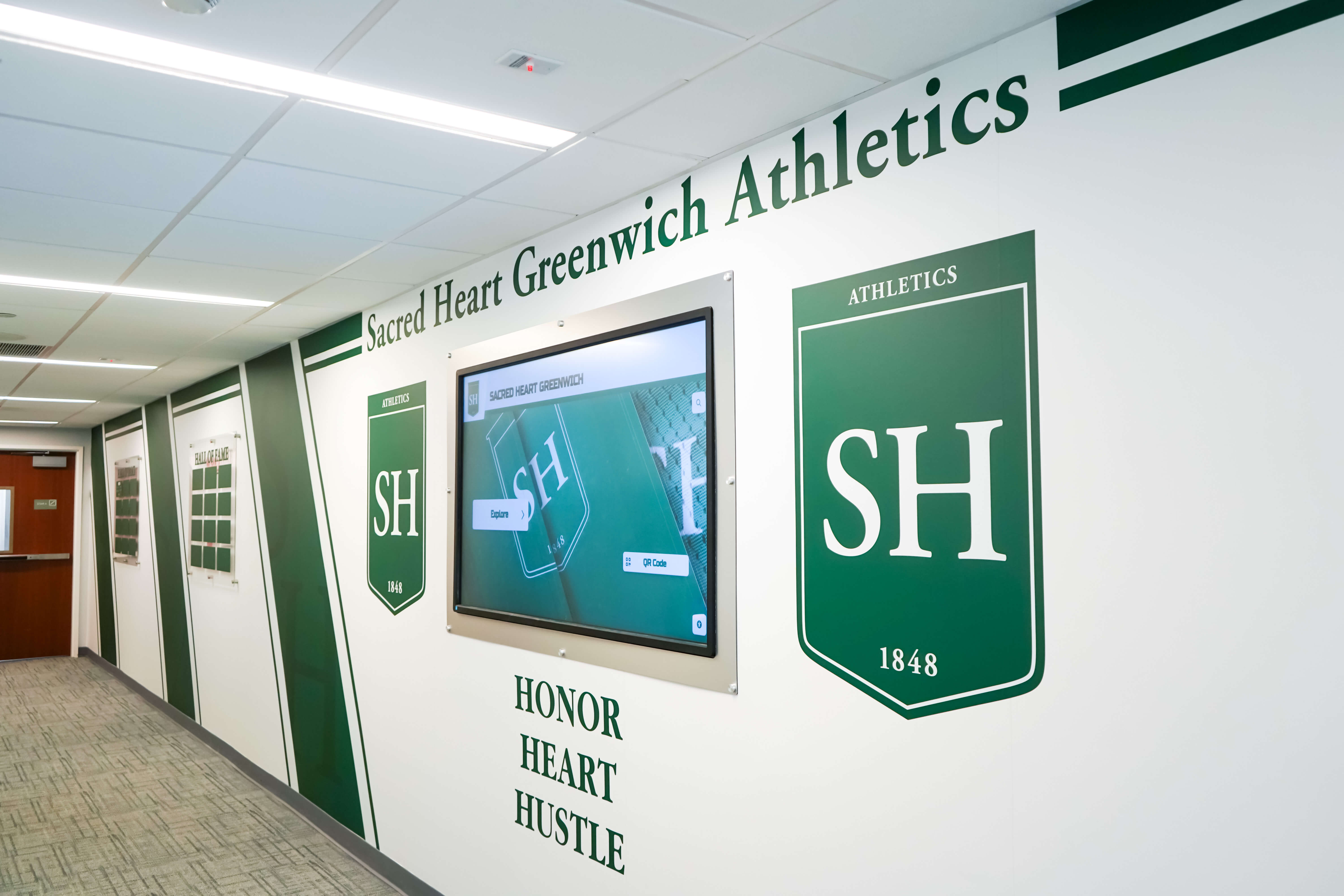
Photography and Media Gathering: Collect photos, videos, and media assets for recognition profiles. Sources include school archives, yearbook photos, newspaper coverage, alumni personal collections, and newly created photography for current athletes and recent graduates. Establish consistent quality standards for professional presentation.
Profile Creation: Develop detailed recognition profiles using consistent templates. Include complete achievement information, career statistics where applicable, biographical details, photos and videos, and contextual information about significance. Quality control processes ensure accuracy before publication.
Organization and Categorization: Establish logical content organization structures. Create clear navigation categories, develop consistent naming and labeling, establish filtering and search parameters, and define featured content rotation strategies. Intuitive organization dramatically affects user experience and recognition discovery.
Phase 4: Installation and Launch (Months 5-6)
Physically install systems, train staff, test thoroughly, and execute successful public launches.
Physical Installation: Professional installation ensures optimal results. Verify electrical and network infrastructure meet requirements, mount displays securely following all safety codes, configure connectivity and system settings, integrate institutional branding and customization, and conduct complete testing before soft launch.
Staff Training: Comprehensive training enables confident content management. Train all staff who will manage content updates, provide documentation and quick-reference guides, establish clear content approval workflows, and ensure backup personnel can manage systems if primary administrators are unavailable. Guidance on training staff for digital recognition displays ensures effective knowledge transfer.
Soft Launch and Testing: Limited release before public launch identifies issues requiring correction. Invite select stakeholders to test systems, gather feedback about functionality and content, identify bugs or usability concerns, verify all content displays correctly, and refine based on testing results.
Public Launch Event: Grand opening generates awareness and excitement. Host formal unveiling ceremonies, invite recognized alumni and current students, engage media for publicity coverage, promote through school communications and social media, and demonstrate features encouraging ongoing exploration.
Best Practices for Sustained Recognition Excellence
Successful hall of fame walls require ongoing attention maintaining relevance and value across years and decades.
Regular Content Updates and Maintenance
Recognition currency requires systematic update processes keeping content fresh and accurate.
Achievement Recognition Cadence: Establish clear timelines for adding new recognition including immediate updates for milestone achievements, weekly updates during active seasons, monthly reviews ensuring no accomplishments missed, end-of-season comprehensive updates, and annual historical content addition projects expanding archives.
Content Quality Standards: Maintain consistent quality across all recognition through standardized photo requirements, consistent biographical detail levels, verified statistics and achievement dates, proofed text free from errors, and uniform formatting and presentation.
Historical Expansion: Continuously expand historical recognition filling gaps in earlier decades. Research projects can focus on specific eras, sports, or achievement types. Engage alumni to contribute photos, memories, and verification of historical accomplishments. Over time, these efforts create increasingly comprehensive institutional histories.
Engaging Alumni and Community
The best recognition systems create ongoing engagement opportunities connecting diverse audiences with institutional heritage.
Alumni Participation: Invite alumni contributions including historical photos and memorabilia, achievement verification and additional context, personal reflections about their experiences, and participation in recognition ceremonies or launches. This involvement strengthens alumni connections while improving content quality.
Social Media Integration: Extend recognition reach through coordinated social sharing. Feature specific achievements or athletes regularly, encourage recognized individuals to share their profiles, create hashtags for recognition discussions, and celebrate anniversaries of historic achievements. Social amplification increases visibility far beyond those visiting campus physically.
Educational Integration: Incorporate recognition into curriculum and student life including school history courses exploring institutional heritage, student projects researching and documenting achievements, new student orientation showcasing traditions, and prospective student tours highlighting excellence. These touchpoints maximize recognition value while strengthening school culture.
Strategies for increasing school pride through recognition demonstrate how hall of fame walls contribute to broader institutional culture.

Performance Monitoring and Optimization
Analytics and feedback inform continuous recognition improvement ensuring systems serve evolving institutional needs.
Engagement Analytics: Monitor usage patterns revealing recognition effectiveness including total interactions and time spent, popular content and athletes, search patterns showing discovery approaches, peak usage times informing update scheduling, and trends over time indicating sustained interest or declining engagement.
Stakeholder Feedback: Systematically gather stakeholder input through user surveys assessing satisfaction, suggestion boxes collecting improvement ideas, focus groups exploring specific experiences, alumni feedback during reunions or events, and student input through advisory groups or classes. This qualitative feedback complements quantitative analytics.
Iterative Enhancement: Use insights to guide ongoing improvements including adding requested features or content types, refining navigation based on usage patterns, expanding popular content categories, improving search functionality addressing common queries, and enhancing visual presentation based on feedback. Recognition systems should evolve continuously rather than remaining static after initial launch.
Addressing Common Concerns and Questions
Schools considering new recognition systems frequently ask similar questions about implementation, costs, and outcomes.
“What Happens to Existing Traditional Displays?”
Digital systems complement rather than necessarily replace traditional recognition. Many schools maintain select traditional displays—signature trophy cases, historic plaques, championship banners—while adding digital capacity for comprehensive documentation beyond physical space limits.
Hybrid approaches honor tradition while solving capacity constraints. Physical displays provide visual presence and tangible recognition for highest-profile achievements, while digital systems ensure every accomplishment receives appropriate acknowledgment. This combined strategy satisfies traditionalists while delivering modern capabilities that physical-only approaches cannot match.
“How Much Does Quality Recognition Really Cost?”
Investment ranges vary based on scope and selected solutions. Schools can implement effective recognition programs at various budget levels:
Entry-Level Investment ($5,000-$12,000): Web-based recognition platforms without physical displays provide searchable databases, basic multimedia support, and remote accessibility. Appropriate for schools with severe budget constraints or those seeking to supplement existing physical displays with enhanced accessibility.
Mid-Range Investment ($15,000-$30,000): Single touchscreen display installation with comprehensive software platform delivers prominent physical presence, unlimited digital capacity, intuitive content management, and engaging interactive experience. Appropriate for most schools seeking balanced investment in recognition excellence.
Comprehensive Investment ($40,000-$100,000+): Multiple displays across campus, extensive content development, custom branding and features, and comprehensive historical digitization create institution-wide recognition systems. Appropriate for larger institutions or those making recognition central to identity and culture.
Compare these investments against alternatives including ongoing physical plaque production ($50-$200 per plaque × dozens annually), trophy case expansion ($3,000-$8,000 per case), physical display maintenance and updates, and wasted recognition value from achievements sitting in storage. Many schools discover digital systems achieve cost parity within 3-5 years while providing capabilities physical systems never could.
Analyzing ROI from digital alumni recognition provides frameworks for comprehensive value assessment beyond simple cost comparison.
“How Long Does Implementation Take?”
Timeline depends on scope and content development depth. Typical projects follow these patterns:
Fast Implementation (2-3 months): Limited historical content, basic profiles for recent graduates, and streamlined installation. Appropriate when time pressure exists or when planning to expand content gradually after launch.
Standard Implementation (4-6 months): Comprehensive recent content, selective historical recognition, and thorough planning and testing. Appropriate for most schools balancing speed with quality and completeness.
Extensive Implementation (6-12 months): Deep historical research, comprehensive content across decades, custom development needs, or coordination with facility renovation projects. Appropriate when quality and completeness outweigh launch urgency.
Phased approaches enable faster initial launches with valuable content while continuing to expand historical recognition over subsequent months or years. This strategy provides immediate value while spreading content development effort sustainably.
“What About Technology Obsolescence?”
Modern cloud-based platforms minimize obsolescence concerns through automatic software updates, hardware standardization ensuring replaceable components, and vendor commitment to long-term platform evolution. Commercial-grade touchscreen displays typically operate reliably for 5-8 years before replacement—comparable to other institutional technology lifecycles.
Select vendors committed to long-term educational market presence rather than consumer-focused companies that might discontinue products. Cloud-based platforms ensure content remains accessible regardless of underlying technology changes. Even if displays eventually require replacement, content investments transfer to new hardware without starting over.
Well-chosen recognition systems protect achievement documentation for generations regardless of future technology evolution. The content—not the display technology—represents the primary long-term value.
The Future of School Recognition
Recognition technology continues evolving, with emerging capabilities promising enhanced engagement and new applications.
Emerging Technologies and Capabilities
Forward-looking recognition systems will incorporate advancing technologies including artificial intelligence enabling natural language queries, augmented reality providing immersive achievement exploration, voice interaction for hands-free navigation, predictive analytics personalizing content for viewers, and enhanced social integration extending recognition reach.
Schools implementing modern digital systems now position themselves to adopt these enhancements as they mature and become standard. Cloud-based platforms receive automatic feature updates without requiring replacement investments, ensuring systems remain current across years.
Expanding Recognition Scope
The best institutions recognize that comprehensive recognition extends beyond athletics to celebrate diverse excellence including academic achievement and scholarship, fine and performing arts accomplishments, service learning and community contribution, leadership and character development, and alumni achievement in careers and communities.
Digital recognition platforms established for athletics can expand to accommodate these additional recognition domains, creating unified systems celebrating complete institutional excellence. This comprehensive approach demonstrates that schools value all forms of achievement equally while providing single platforms serving diverse stakeholder interests.
Frameworks for comprehensive student recognition programs show how schools can honor achievement across all domains systematically.
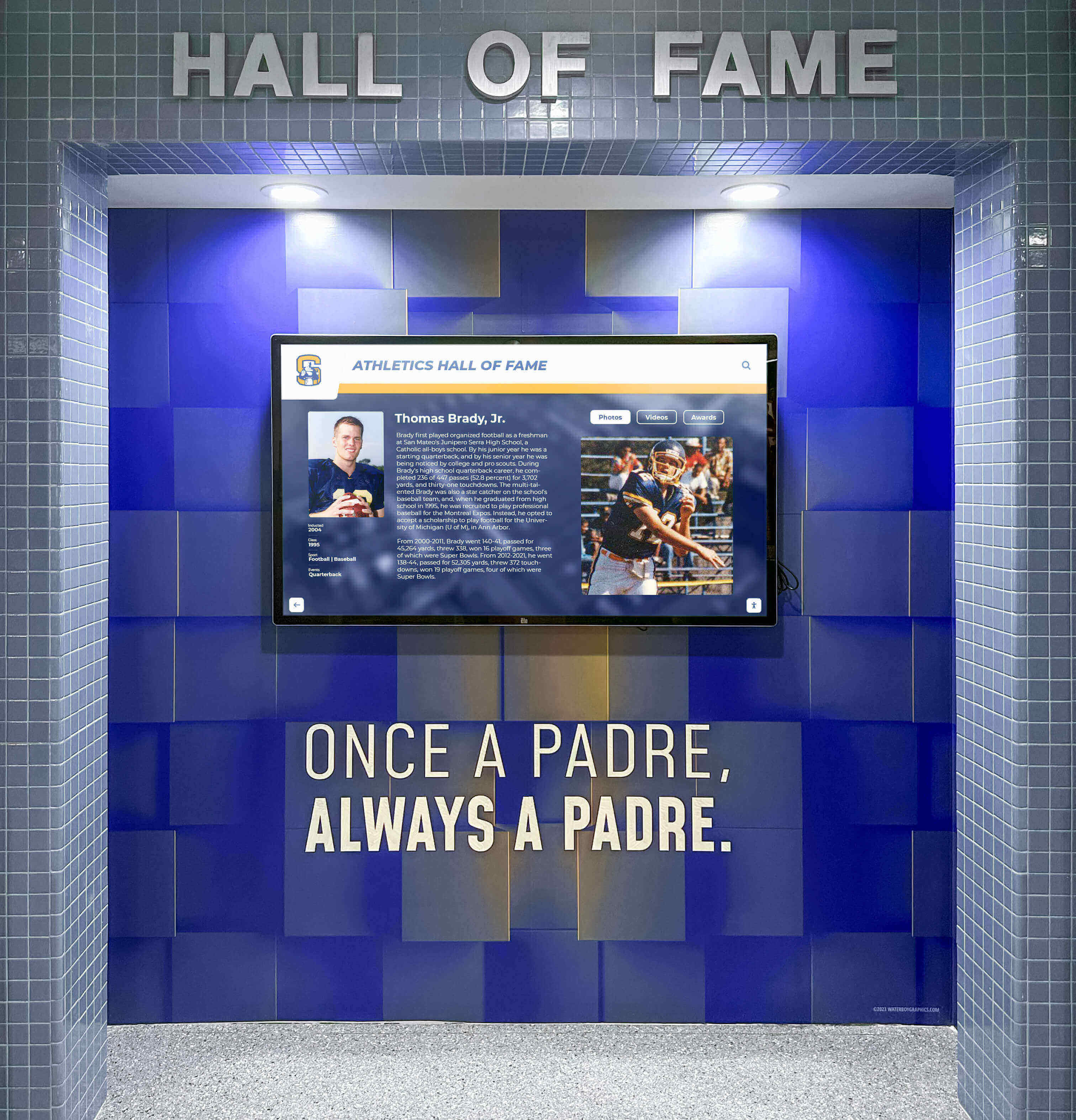
Honoring Every Achievement: The Promise of Modern Recognition
Educational institutions exist to develop excellence—academic, athletic, artistic, civic, and personal. When schools help students achieve extraordinary things, those accomplishments deserve recognition honoring their significance completely and permanently. The challenge has always been that achievement accumulates faster than recognition capacity grows, forcing impossible choices about what deserves visibility and what must hide in storage.
The best school hall of fame walls eliminate these forced choices through unlimited digital capacity, engaging interactivity, instant updates, and comprehensive accessibility. Every championship team receives acknowledgment. Every record holder gains recognition. Every distinguished alumnus earns honor. Physical space limitations no longer dictate whose excellence gets celebrated and whose contributions disappear into forgotten archives.
Modern recognition systems transform institutional culture by demonstrating that every achievement truly matters. Current students see clear pathways to excellence and understand their potential place in ongoing traditions. Alumni maintain connections with institutions honoring their contributions permanently. Communities take pride in comprehensive excellence documentation spanning decades. And prospective students and families witness institutional commitment to recognizing and celebrating individual accomplishment.
Whether addressing overflowing trophy cases, seeking improved alumni engagement, supporting recruiting efforts, or simply wanting to honor achievement appropriately, digital recognition systems provide compelling solutions. They preserve complete institutional histories, create engaging exploration experiences, enable instant celebration of new accomplishments, and ensure recognition reaches audiences anywhere through web accessibility.
The transition from physical limitations to digital possibilities represents more than technology adoption—it represents commitment to recognizing everyone who contributes to institutional excellence, preserving every moment of achievement, and ensuring decades of student accomplishment remain visible and valued for generations to come.
Schools ready to transform recognition can explore purpose-built solutions like Rocket Alumni Solutions, which combine intuitive content management, professional presentation, comprehensive features, and reliable support specifically designed for educational institution needs. These platforms enable schools to honor excellence appropriately while building recognition traditions that strengthen culture, engage communities, and inspire future students to pursue their own extraordinary achievements.
The best school hall of fame walls don’t force choices between recognizing some achievements while ignoring others. They celebrate every accomplishment, honor every contributor, and preserve every moment of excellence that makes educational institutions special. Every student deserves recognition for their achievements—not just those whose excellence happens to fit limited physical space. Modern recognition systems finally make comprehensive celebration possible.



































